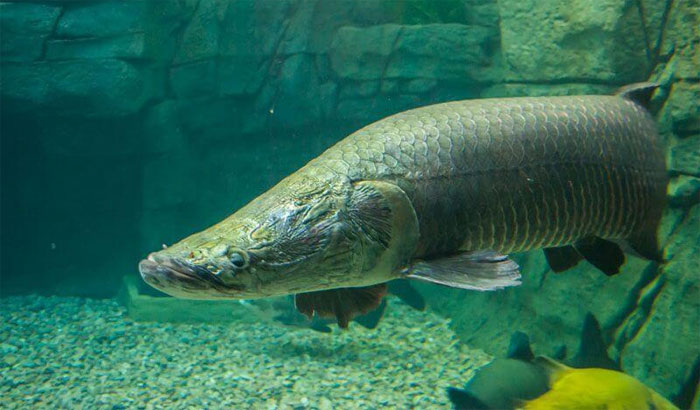The scales are as hard as the armor of an Amazon arowana
The strong scales structure of Aparaima fish helps them to cope with the sharp teeth of predators in the same habitat as piranhas.
In order to survive in the Amazon lake area full of piranha predatory fish, Aparaima gigas of the Arowana evolved scales as hard as armor. The outer scales are mineralized, becoming a barrier to prevent threats such as the teeth of predators. However, burrs and protrusions make the scales flexible, according to research published in the journal Matter.

Aparaima fish can be up to 3 meters long.(Photo: Wikipedia).
The inner scales bind to collagen according to the Bouligand structure . Similar to spiral staircases, this structure also exists in lobster shells, beetles and crabs, according to co-author Wen Yang of the Department of Nanotechnology at the University of California, San Diego.
To find out about the hardness of crust, the team at the University of California, San Diego and the University of California, Berkeley, conducted pressure resistance tests. First, they ground the arowana scales in water for 48 hours. Then, they concentrated the compression between the scales and stretched the outer edge. During this process, they noticed that the outer scales first expanded, then cracked and flaked. The scales structure helps prevent cracks from spreading.
The team concludes that the inner and outer scales combine to form an ultra-light, flexible, yet rigid structure. According to them, this is one of the planet's most durable bendable biomaterial. This structure can be modeled to create future artificial armor.
Arapaima gigas (the seahorse) live in the Amazon basin and have been introduced to Southeast Asia. Among the largest freshwater fishes and the fastest growing vertebrates on the planet, arowana can grow up to 3 meters long. This species has the ability to breathe air. Every 5-15 minutes, they need to rise into the water and breathe air to collect 95% of the oxygen they need. The rest is supplemented by water flowing through the gills.
- Things you did not know about the seals
- Giant sea monsters in the Amazon River in danger of extinction
- Aquarius armor
- Bulletproof material new varieties of fish scales?
- See with your own eyes a hundred kilogram arowanas
- US research armor anti-ammunition
- 'Superman' armors
- Discovered that the Amazon fish have scales that can resist Piranha's predatory teeth
- Things you don't know about arowana
- Learn fluid armor technology
- Armor for future firefighters
- Hyundai unveils robot armor that gives you superhuman strength
- The US Army is about to test the armor of '' Iron Man ''
- Giant monster in the Amazon River before extinction
 Animal 'suffering' after hibernation
Animal 'suffering' after hibernation Why do goats climb well?
Why do goats climb well? Scientists were surprised to see chimpanzees eating turtles
Scientists were surprised to see chimpanzees eating turtles Giant catfish died deadly due to drought in Thailand
Giant catfish died deadly due to drought in Thailand